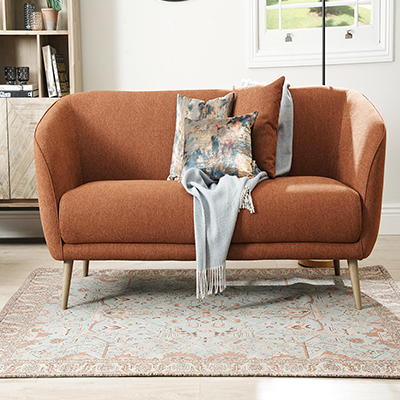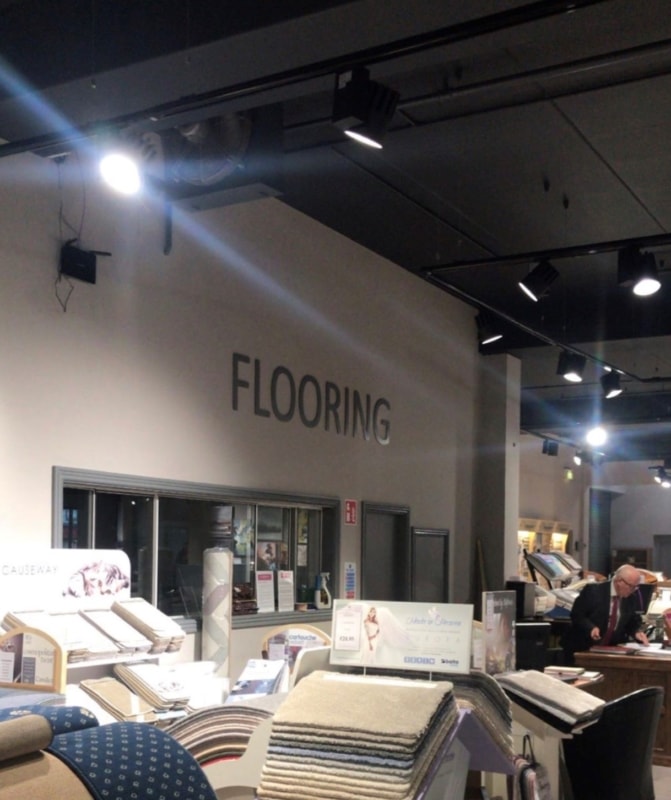Michael Murphy Home Furnishing
Let’s Talk Carpets and Flooring
Did you know that our Newbridge store is home to an extensive flooring department, with an expert team at the ready to assist you in kitting out your space?
Choosing a new flooring option, especially carpet, can be complicated at best, what with so many variations and styles out there. We’ve put together a carpet guide to make your research process even simpler and arm you with all your must-have knowledge before you visit our team in-store.
So for starters, what is a carpet made of?
Carpets consist of pile and backing. The pile is made up of the fibres and materials you can see on the surface, which are attached through various techniques and methods, like weaving, tufting and knotting, to the back/base.
There are so many different types and styles of carpet, let us break them down for you:
Cut Pile
Cut pile carpet gets its name from the cutting of the fibre loops to make an even, straight pile that tends to be softer and more luxurious than loop types. See some cut pile types below…
- Axminster
A woven cut pile carpet named after the town in which it was and still is manufactured. The pile and backing yarns are woven together for a very sturdy result. These carpets tend to be on a high-quality, luxurious side.
- Cable
This pile type consists of yarn formed from two or more yarn strands twisted together.
- Frieze
A frieze carpet is formed from strands of yarn woven so tightly that they begin to curl or wave, creating a nice pattern and texture. This one is particularly great for hiding wear and tear – footprints in particular.
- Shag
Shag carpets and rugs have a jagged appearance, as the fibre strands are so long that they don’t stand up or in a uniform shape; making them fall or lean over in various directions, creating a dishevelled appearance and texture. Great for a retro, 1970’s feel in the home and are hard-wearing underfoot.
- Saxony
This carpet’s defining characteristic is that the individual tips of each piece of yarn are visible on the surface, cut at a slight angle.
- Plush/Velvet
An incredibly soft feel and even exterior created from perfectly cut fibres gives plush/velvet carpet its tidy, sumptuous appearance.
Loop Pile
As the name suggests, loop carpet is formed from yarns and fibres that are uncut, the loops left rounded, as they were when initially woven into the base. Because of the curved strands, this tends to a very durable surface, often preferred for public places and hotels.
- Berber
Often used interchangeably to describe loop pile carpets as a whole, a traditional Berber consists of heavy fibres that have specks of colour in the surface material, woven against another base colour.
Cut-Loop Pile
This type of carpet combined loops and cut loops to create its texture and finish. This technique is great for creating decorative patterns and textures surfaces.
- Wilton
A high-end woven carpet constructed on a loom that results in tight-knit, even patterns, this textile can be cut pile, looped or a mix.
- Knitted
By interlacing fibres in connected loops, this technique results in the back and pile being created in one go via careful needlework.
CARPET STRUCTURE
- Twist
Twist refers to how tightly the carpet fibres have been twisted. A high level would be between 6-9 twists per inch, whereas a regular level would be between 3-6. The twist count is important for cut pile carpets, because if the fibres are loosely twisted they will unravel easily, which will show as wear and tear or flattening on the surface.
- Density
Self-explanatory, this refers to how many fibres exist in the carpet and how close together they are placed. The more there are, the more luxurious the feel; the tighter they sit together, the more durable the surface
FABRIC TYPES
Generally speaking, most carpets will be made up of fibres crafted from the materials below, whether these be synthetic or natural. However, there are more unusual materials like jute – a type of plant – available for those seeking alternatives to traditional textiles.
- Wool
- Silk
- Polyester
- Polypropylene
- Nylon
- Linen
- Acrylic
- Olefin
STAIN RESISTANCE
Though some fabrics have a natural level of stain-resistance, you can opt for a carpet treated with anti-spill technology, ensuring that even if you spill red wine or coffee, it sits on the surface where you can mop it up and doesn’t sink or soak into the material.






